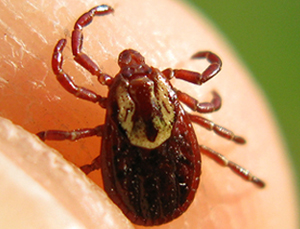
You hear it on the news all the time. Warnings about ticks and Lyme disease. But is tick prevention really necessary? In a word, yes. In a tick-prone area like Long Island, it’s important to reduce your risk of getting bit so that it’s as low as possible.
The consequences of tick bites can be devastating. Lyme disease and other tick-borne disease symptoms can drastically impact quality of life and even be fatal.
How to Prevent Ticks
Ticks have long been a concern for hikers but in recent years more and more people have reported receiving tick bites in their own Long Island backyards. This is happening because conditions in these backyards are attractive to ticks. It’s the same principle as any other infestation – if ticks can find food, water, and shelter at a location, they will move in.
Here are some other ways to prevent ticks:
- Keep your grass mowed regularly so it doesn’t get long. Ticks can easily hide in grass and leaves so also get rid of any leaves cluttering up the property.
- If there’s a wooded area on or at the edge of your property, put a three-foot wide barrier of gravel, wood chips, or some other hardscaping element. between the lawn and that wooded area to deter tick migration.
- Keep decks, patios, playground equipment, etc. away from trees, wooded areas and tall grasses.
- Neatly stack wood in a dry area. It deters rodents from hiding in the wood pile. Ticks can feed on rodents and from there get to you.
- Call and speak with a tick control company like Arrow – we offer a highly effective lawn treatment for ticks.
Need an Estimate for Tick Control?
How to Avoid Tick Bites
The best way to prevent tick bites is to prevent the ticks themselves, but that’s not always possible. So the second best way to prevent tick bites is to be prepared when you know you’re going to an area where ticks may be present.
Here are some tips to help you avoid ticks:
- Dress to avoid ticks – Limit exposed skin, wear enclosed shoes,and tuck pants into socks. Light-colored clothing may also be less attractive to ticks.
- Learn to identify areas that may harbor ticks – Avoid wooded and brushy areas with high grass and leaf litter.
- Walk in the center of trails – Ticks are more likely to be found on grasses and plants along the edges of trails.
- Use repellents – DEET-based repellants work well and offer protection that lasts up to several hours. Always follow product instructions. If you don’t tolerate DEET, there are other types of repellants you can try.
- Bathe or shower as soon as possible after coming indoors – Preferably within two hours.
- Conduct a full-body tick check – Use a mirror to view all parts of your body upon return from tick-infested areas. Parents should check their children for ticks.
- Examine gear and pets – Ticks can ride into the home on clothing and pets, then attach to a person later, so carefully examine pets, coats, and day packs.
- Be extra vigilant in warmer months – April through September is when ticks are most active.
Tick Control and Prevention Services on Long Island
Dealing with ticks? Arrow Exterminating Company provides high-quality exterior tick treatment services in Long Island and surrounding areas.
Call today to request your consultation!
Back to Flea and Tick Exterminators – Control – Removal